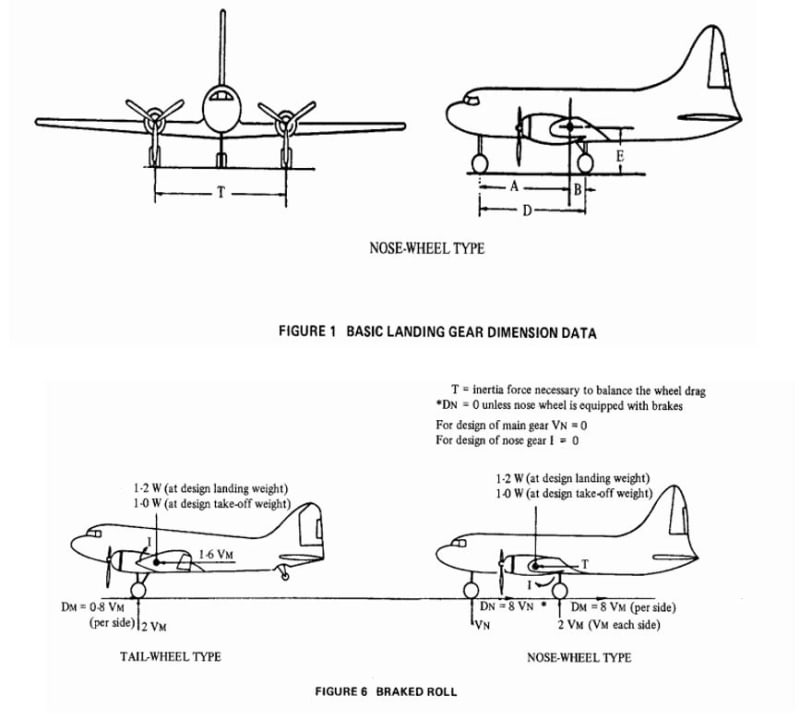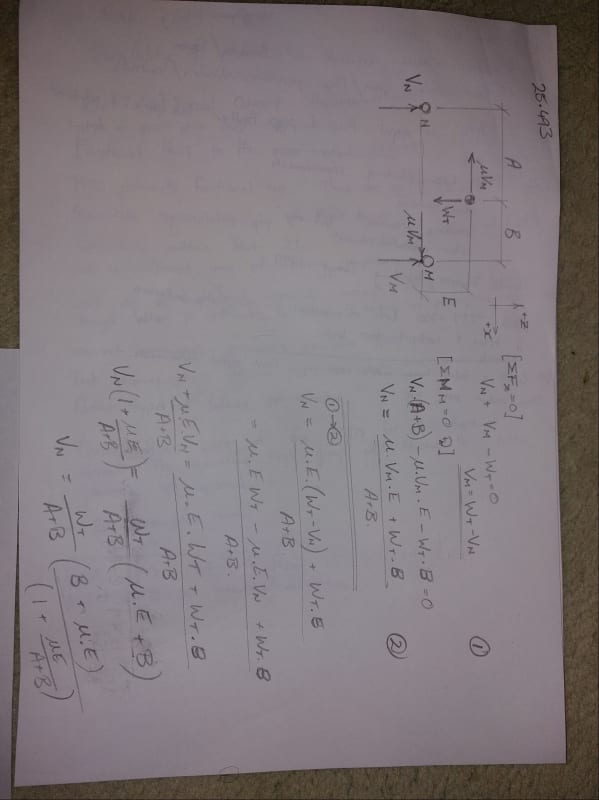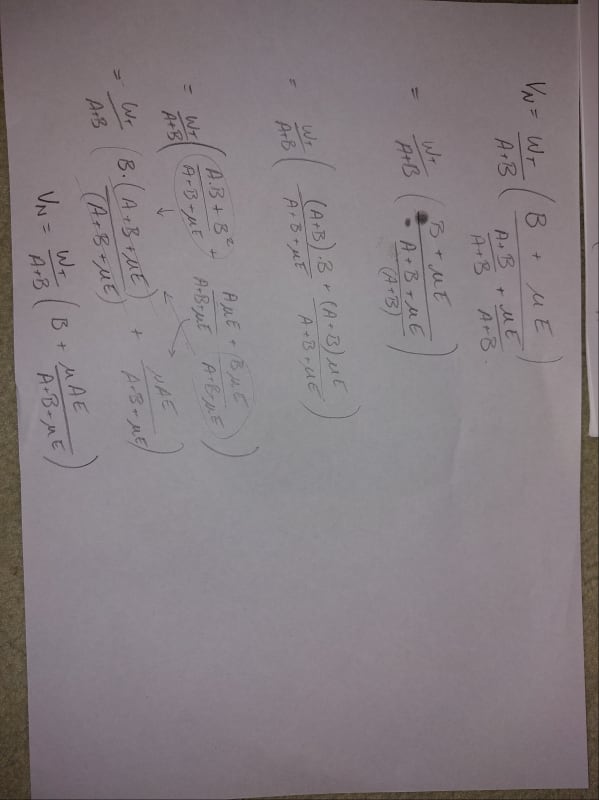Hi,
FAR § 25.493 (e) states an equation to calculate the maximum nose gear reaction in a braked roll. I cannot for the life of me back-engineer this equation-and it seems so simple. If anybody could show me how to calculate it, I would be most appreciative.
Here is the relevant excerpt and Figure 6 from Appendix A is attached below.
FAR § 25.493 (e) In the absence of a more rational analysis, the nose gear vertical reaction prescribed in subparagraph (d) of this paragraph must be calculated in accordance with the following formula:

Where:
VN = Nose gear vertical reaction
WT = Design take-off weight
A = Horizontal distance between the c.g. of the aeroplane and the nose wheel.
B = Horizontal distance between the c.g. of the aeroplane and the line joining the centres of the main wheels.
E = Vertical height of the c.g. of the aeroplane above the ground in the 1·0 g static condition.
µ = Coefficient of friction of 0·8.
f = Dynamic response factor; 2·0 is to be used unless a lower factor is substantiated.

FAR § 25.493 (e) states an equation to calculate the maximum nose gear reaction in a braked roll. I cannot for the life of me back-engineer this equation-and it seems so simple. If anybody could show me how to calculate it, I would be most appreciative.
Here is the relevant excerpt and Figure 6 from Appendix A is attached below.
FAR § 25.493 (e) In the absence of a more rational analysis, the nose gear vertical reaction prescribed in subparagraph (d) of this paragraph must be calculated in accordance with the following formula:

Where:
VN = Nose gear vertical reaction
WT = Design take-off weight
A = Horizontal distance between the c.g. of the aeroplane and the nose wheel.
B = Horizontal distance between the c.g. of the aeroplane and the line joining the centres of the main wheels.
E = Vertical height of the c.g. of the aeroplane above the ground in the 1·0 g static condition.
µ = Coefficient of friction of 0·8.
f = Dynamic response factor; 2·0 is to be used unless a lower factor is substantiated.



